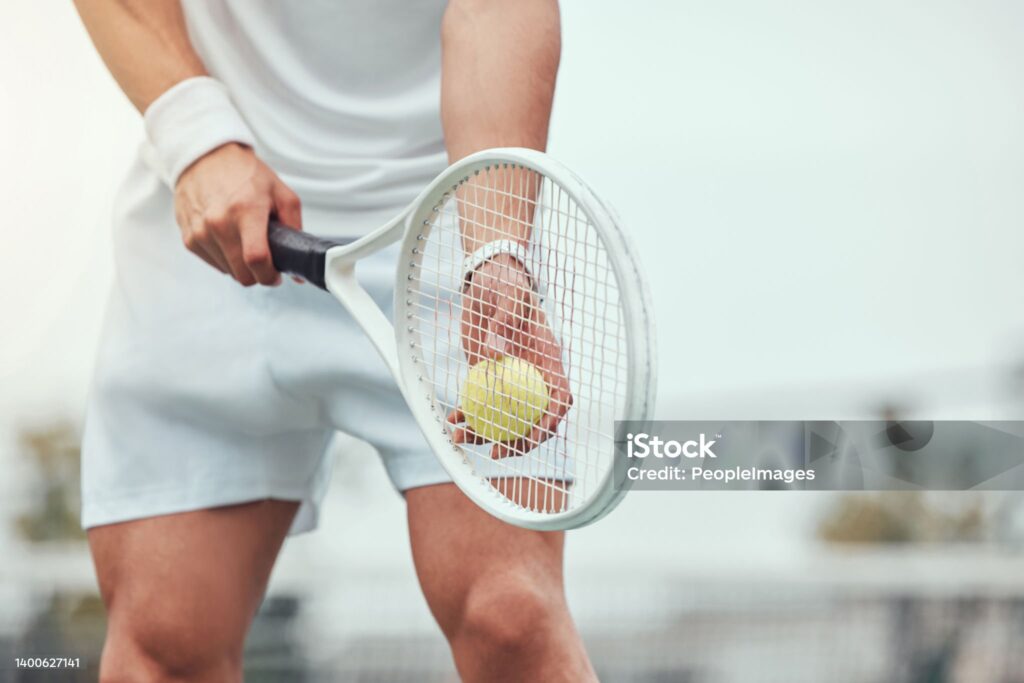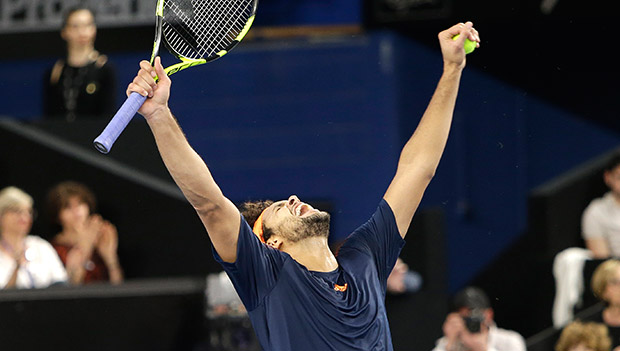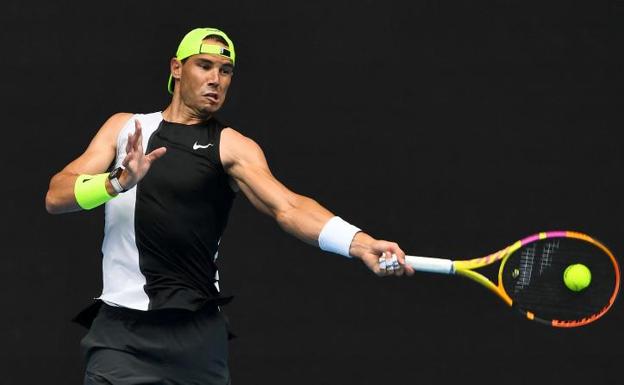Holding the Racket
There are different grips for different strokes but the most common grips are the Eastern, Western and Continental and several variations within these three basic grips.


These grips evolved as the most comfortable way to hold the racket. But it depends on the type of court surface you are playing on. The Eastern and Western grips derived from the courts that existed on the Eastern and Western coasts of the USA.
The original courts, going back a century, on the Eastern coastline and right up to New York were grass and soft clay – so a low bounce of the ball hence the Eastern grip with a more open racket face.
The Western coastline with a much drier climate had courts with a harder surface and therefore a higher bounce of the ball – so the Western grip developed with a more closed racket face.
The Continental grip was developed in Britain and Europe. Groundstrokes are best played using Eastern or Western grips and the Continental grip is used for serving and volleying.
If you place a racket on the edge the handle has a top and bottom plane and two side planes.
It also has an upper left and right slant and a lower left and right slant. So an octagonal-sided handle with eight slants or sides.
Forehand grip
The most used by ATP and WTA players in today’s tennis is the semi-western grip.
It lets you add topspin effectively without the issues of a full Western grip. Rafa Nadal uses a semi-western whereas Roger Federer uses an Eastern grip.
Carlos Alcaraz, the new No.1, also uses a semi-western for his very powerful forehand drive.
For a beginner to the game of tennis let’s keep things simple. Place your racket flat on the ground and then pick it up with your hand around the handle.
The ”V” between your thumb and index finger should be on the upper edge of the upper right slant. This gives a comfortable shake-hands feel to how you hold your racket – and the grip is halfway between Eastern and Western.
Backhand grip
The backhand drive is easier to learn if you use a two-handed grip – this will give you more control and make ball contact easier.
The playing hand is positioned between the Eastern and Continental backhand grips. And the supporting hand rests above, in an Eastern forehand grip, to provide a firm-wristed stroke.
If you wish to develop a single-handed backhand like Roger Federer you will need to be patient – it takes time and a lot of practice.
The grip to use is the Eastern backhand and the ”V” is on the lower edge of the upper left slant. This backhand was the staple backhand for many years. And your writer can well remember being actively discouraged from teaching or using a two-handed shot.
Using two hands means you have to get closer to the ball. Taking up more time—that’s why many prefer not to.
Serve
The ideal grip to use for the serve and the volley is the Continental grip. A beginner will struggle to use this grip to start with. And may need to adjust the forehand grip before shifting the hand on top of the racket.
The ”V” is in the centre of the upper left slant and the fingers are spread out to relax the wrist and develop the throwing action needed for the serve.
Volley
The grip to use for volleying is the Continental but instead of spreading the fingers, as in serving, move the fingers closer together holding the racket like a hammer or chopper.
The ball is travelling fast so to control the shot, use a stiff wrist and minimum racket movement.





